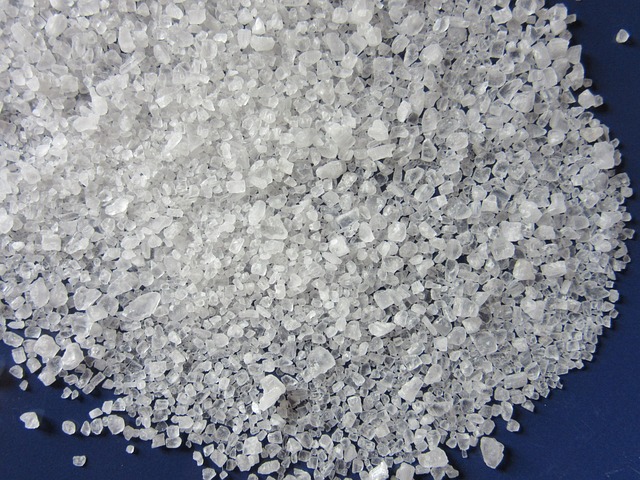Salting is more important than ever when cooking. Salt makes everything tastier. It intensifies flavors and enhances the experience of eating. What to look out for when salting?
The salt
Table salt is nothing more than pure, crystalline sodium chloride, which is a chemically produced form of salt. It can be found in most ready meals and processed foods but has no nutritional value as all the valuable nutrients are removed during the manufacturing process for use in other industries (agriculture, pharmaceuticals, etc.). This is why unrefined salt is highly valued (and why its price is higher). After processing, other chemicals are added to the salt to prevent it from clumping and to prolong its shelf life. The end result is a product that has no beneficial effect on the body, in fact! Table salt can upset the balance of many physiological processes, leading to problems such as high blood pressure, heart disease, kidney disease, osteoporosis, and impaired muscle or nerve function. It is also highly addictive.
Salt is unfairly singled out as an unhealthy food ingredient. Yet it is an essential nutrient without which we would not exist. Our bodies cannot store large amounts of salt, so we need to consume it regularly. However, we really should not overdo it when it comes to salt.
Salt is a mineral, sodium chloride. There is no other ingredient in your kitchen that has such an impact on flavor as salt. Not only does it have a unique flavor, it also enhances the flavor of other ingredients. But it does have an effect on texture, it can modify or even deepen other flavors.
When cooking, it is essential to add the right amount, time, and form to the food.
All salt comes from the oceans. Sea salt is the salt that remains after the evaporation of seawater, and rock salt comes from ancient seas. It is important that the salt used in cooking is clean and free from the unpleasant aftertaste. This is not the case with iodized salt. It always has a metallic aftertaste, which unfortunately also affects the food.
The salt particles in the salt container are actually salt crystals that form during the distillation of the salt pans. When cooking, it is very important to know the salt you are using. Know how salty it tastes and how long it takes to dissolve in liquids at different temperatures.
Table salt
Table salt, for example, is fine-grained and compact and therefore very salty. If you use it, make sure that it does not contain anti-caking agents, as this will put unnecessary stress on your body.
Sea salt
Natural sea salts are fleur de sel, sel gris and Maldon. These are less refined. Quality salts are more expensive than refined sea salts. This is why they are used when the texture of the salt crystals or flakes is important in a dish. For example, when used in salted caramel, chocolate biscuits, or fresh salad.
You can use refined sea salt instead for everyday cooking.

Kosher salt
As a point of interest, I mention kosher salt, which is used in the traditional Jewish koshering process. It is additive-free, very pure-tasting salt. However, it is not available everywhere, and when it is, it is very expensive., chunkier grains are also good for absorbing excess moisture or blood, which is particularly important in traditional Jewish cuisine, where food is only considered kosher, i.e. proper and clean, if it is not bloody. Kosher salt has thus become widespread largely because of its function.
Himalayan salt
Himalayan salt Pink
One of the most popular salts nowadays, it is recommended for everything. This salt is mined in the world’s second-largest salt mine, Khewra. It plays a pale pinkish hue thanks to the minerals it contains. Himalayan salt is always untreated salt, which gives it a high mineral and traces element content.
Himalayan Salt Black – Kalak Namak
It comes from the mines of Kala Namak – Central India and is rich in minerals, especially iron, which gives it its dark greyish-pink hue. It has a distinctive sulfurous-sourish taste. It is best used as a seasoning and its sulphuric aroma makes it a popular ingredient in vegan cuisine, as it is an excellent imitation of boiled eggs.
Salting at home
If you always keep two types of salt at home, for example, refined sea salt for general use and a special salt with a special texture, you can apply salting tricks perfectly, click here to read more about the type of salt and what to use it for.
Last updated: September 24, 2023


Comments are closed.